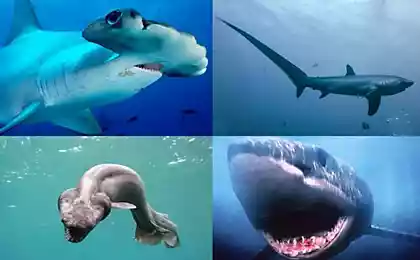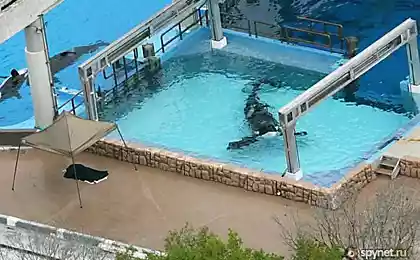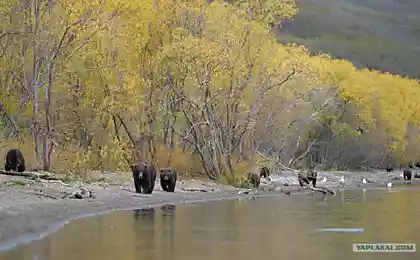713
Fox trainer from Novosibirsk
22 -year-old Irina Mukhametshin from Novosibirsk engaged in training foxes.
Fox she is not simple, but from the Novosibirsk Institute of Cytology and Genetics, where the learning process of domestication of wild animals, brought a special "social" species of foxes, which need to communicate with someone.
- Daily meetings with these foxes, I see how they jump and twist their tails, thirst my attention. Very interesting to work with them as I usually work with the dogs, - says Irina.
7 photos via goodnewsanimal
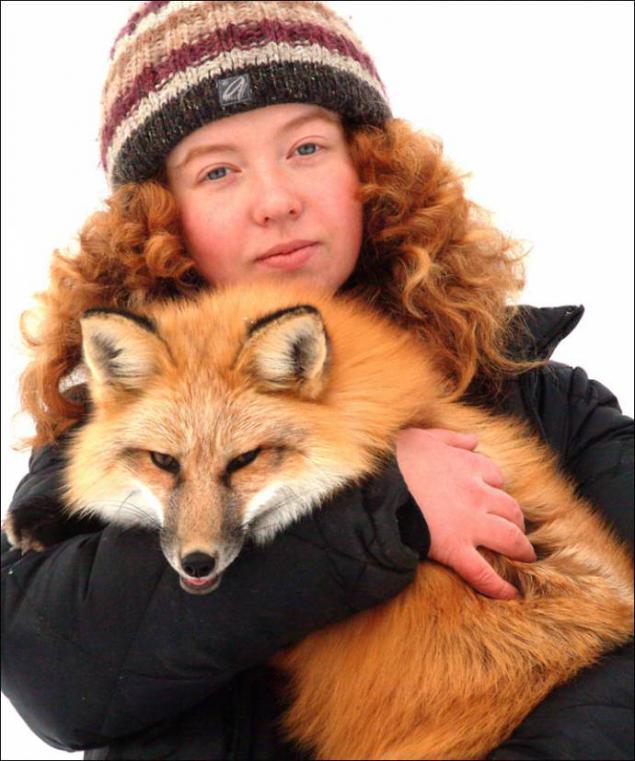
Irina engaged in professional dog training in adolescence. On his own initiative, she decided to try to start to train a fox bred at the institute. She was allowed to choose two of the young animals.
Young need for them to have a keen interest and could be used, for example, food motivation, forcing the fox to execute commands for pieces of yummy.

- My first task was to switch their attention to me with a constant desire to dig into the ground and running around the cage. It was not difficult. Next it was the turn teach them the easiest command "sit", "stand", "Down." We did this every day for 15 minutes, and three weeks later they learned by rote.
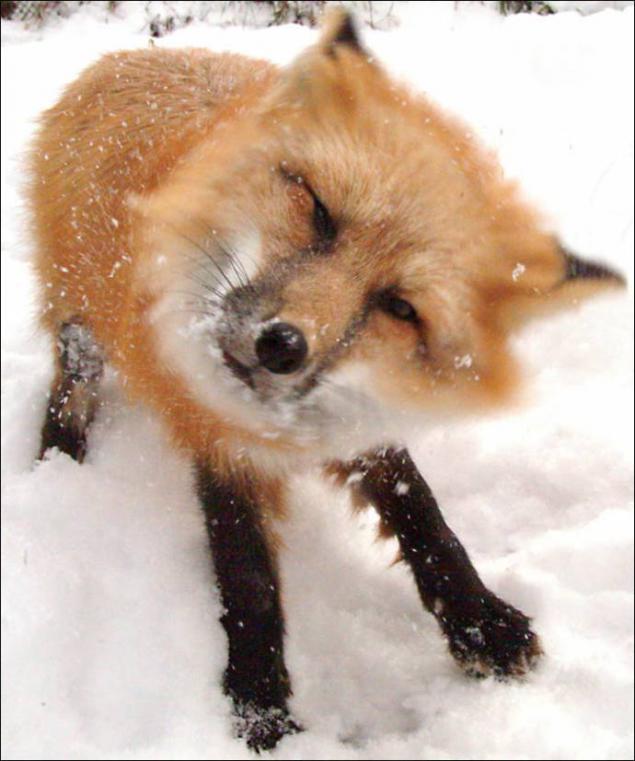
Fox may respond to his nickname as dogs. Fox name is Anna Irina (Irina calls her Nyuta) and Elmo. Once in Akademgorodok, especially to film the process of training the foxes coming film crew from Japan. They were just amazed by what he saw. Irina and she was surprised how quickly the process of learning.
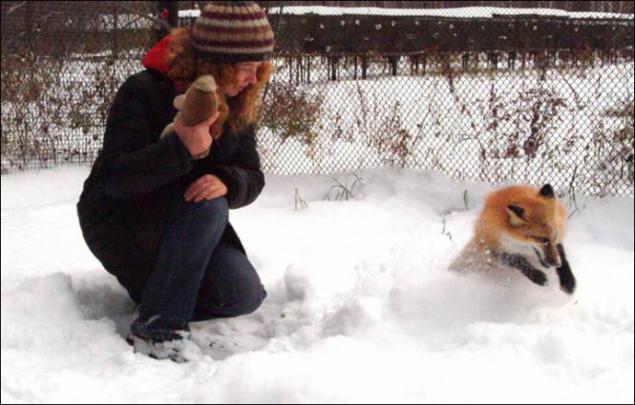
Now Irina writes diploma work done and it proves that foxes can really make excellent pets.
- I now better understand their psychology. They are still not the same as dogs. In the way they react to people, there is something between the behavior of dogs and cats. When Fox praised, they wag their tails, which in the wild do not ever. And they try to lick the man to bring to his attention.

How did the idea for the first time to tame the fox?
In the early 1950s, the famous Russian geneticist and evolutionist DK Belyaev conjectured that the basis for the vast diversity of all pets is selected for a certain type of behavior - friendliness toward humans.

Since all the information about the early stages of domestication of animals such as dogs, cows, horses, have sunk into oblivion thousands of years ago, the only way to test the hypothesis - an evolutionary experiment that in a short time reproduced to the historical process of transformation of a wild animal in a companion, partner and friend of man .
Fox selected as an object of selection for two reasons. Firstly, it is closest to the first pet - a dog. Second, at the beginning of the experiment for about half a century foxes bred in the cellular environment fur farms, and the most difficult period of selection for the ability to reproduce in captivity, they have already passed.
The basis of a fox went to a very simple idea - to replicate what our ancestors did to dogs, cats, cows, pigs and horses. That is, the selected foxes on the basis of their good relationship to the person hoping to get the same range of changes and innovations, which is typical for all domesticated species.
What happened to the fox as a result of selection for the kindness? Within a few generations, the level of the stress hormone - cortisol in their blood has fallen dramatically. They no longer feel uncomfortable communicating with people. In turn, decreased hormonal effect on the offspring of mothers while carrying their cubs. And the view has indeed become very volatile.
First there were foxes with white star on his forehead. Then white patches spread to other parts of the body, like a dog. There were foxes with floppy ears, curly tail, a bulldog bite and shortened muzzle. Foxes have become incredibly affectionate even to complete strangers.
As a result, the idea of artificial selection for kindness had great implications for science, giving into the hands of scientists the unique population of foxes as a material for modern research in genetics, physiology and behavior, and will also create destabilizing selection theory for understanding the processes taking place during domestication.
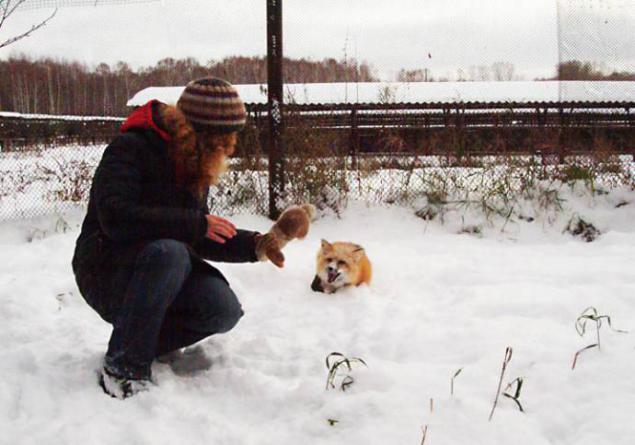
Source:
Fox she is not simple, but from the Novosibirsk Institute of Cytology and Genetics, where the learning process of domestication of wild animals, brought a special "social" species of foxes, which need to communicate with someone.
- Daily meetings with these foxes, I see how they jump and twist their tails, thirst my attention. Very interesting to work with them as I usually work with the dogs, - says Irina.
7 photos via goodnewsanimal

Irina engaged in professional dog training in adolescence. On his own initiative, she decided to try to start to train a fox bred at the institute. She was allowed to choose two of the young animals.
Young need for them to have a keen interest and could be used, for example, food motivation, forcing the fox to execute commands for pieces of yummy.

- My first task was to switch their attention to me with a constant desire to dig into the ground and running around the cage. It was not difficult. Next it was the turn teach them the easiest command "sit", "stand", "Down." We did this every day for 15 minutes, and three weeks later they learned by rote.

Fox may respond to his nickname as dogs. Fox name is Anna Irina (Irina calls her Nyuta) and Elmo. Once in Akademgorodok, especially to film the process of training the foxes coming film crew from Japan. They were just amazed by what he saw. Irina and she was surprised how quickly the process of learning.

Now Irina writes diploma work done and it proves that foxes can really make excellent pets.
- I now better understand their psychology. They are still not the same as dogs. In the way they react to people, there is something between the behavior of dogs and cats. When Fox praised, they wag their tails, which in the wild do not ever. And they try to lick the man to bring to his attention.

How did the idea for the first time to tame the fox?
In the early 1950s, the famous Russian geneticist and evolutionist DK Belyaev conjectured that the basis for the vast diversity of all pets is selected for a certain type of behavior - friendliness toward humans.

Since all the information about the early stages of domestication of animals such as dogs, cows, horses, have sunk into oblivion thousands of years ago, the only way to test the hypothesis - an evolutionary experiment that in a short time reproduced to the historical process of transformation of a wild animal in a companion, partner and friend of man .
Fox selected as an object of selection for two reasons. Firstly, it is closest to the first pet - a dog. Second, at the beginning of the experiment for about half a century foxes bred in the cellular environment fur farms, and the most difficult period of selection for the ability to reproduce in captivity, they have already passed.
The basis of a fox went to a very simple idea - to replicate what our ancestors did to dogs, cats, cows, pigs and horses. That is, the selected foxes on the basis of their good relationship to the person hoping to get the same range of changes and innovations, which is typical for all domesticated species.
What happened to the fox as a result of selection for the kindness? Within a few generations, the level of the stress hormone - cortisol in their blood has fallen dramatically. They no longer feel uncomfortable communicating with people. In turn, decreased hormonal effect on the offspring of mothers while carrying their cubs. And the view has indeed become very volatile.
First there were foxes with white star on his forehead. Then white patches spread to other parts of the body, like a dog. There were foxes with floppy ears, curly tail, a bulldog bite and shortened muzzle. Foxes have become incredibly affectionate even to complete strangers.
As a result, the idea of artificial selection for kindness had great implications for science, giving into the hands of scientists the unique population of foxes as a material for modern research in genetics, physiology and behavior, and will also create destabilizing selection theory for understanding the processes taking place during domestication.

Source:



